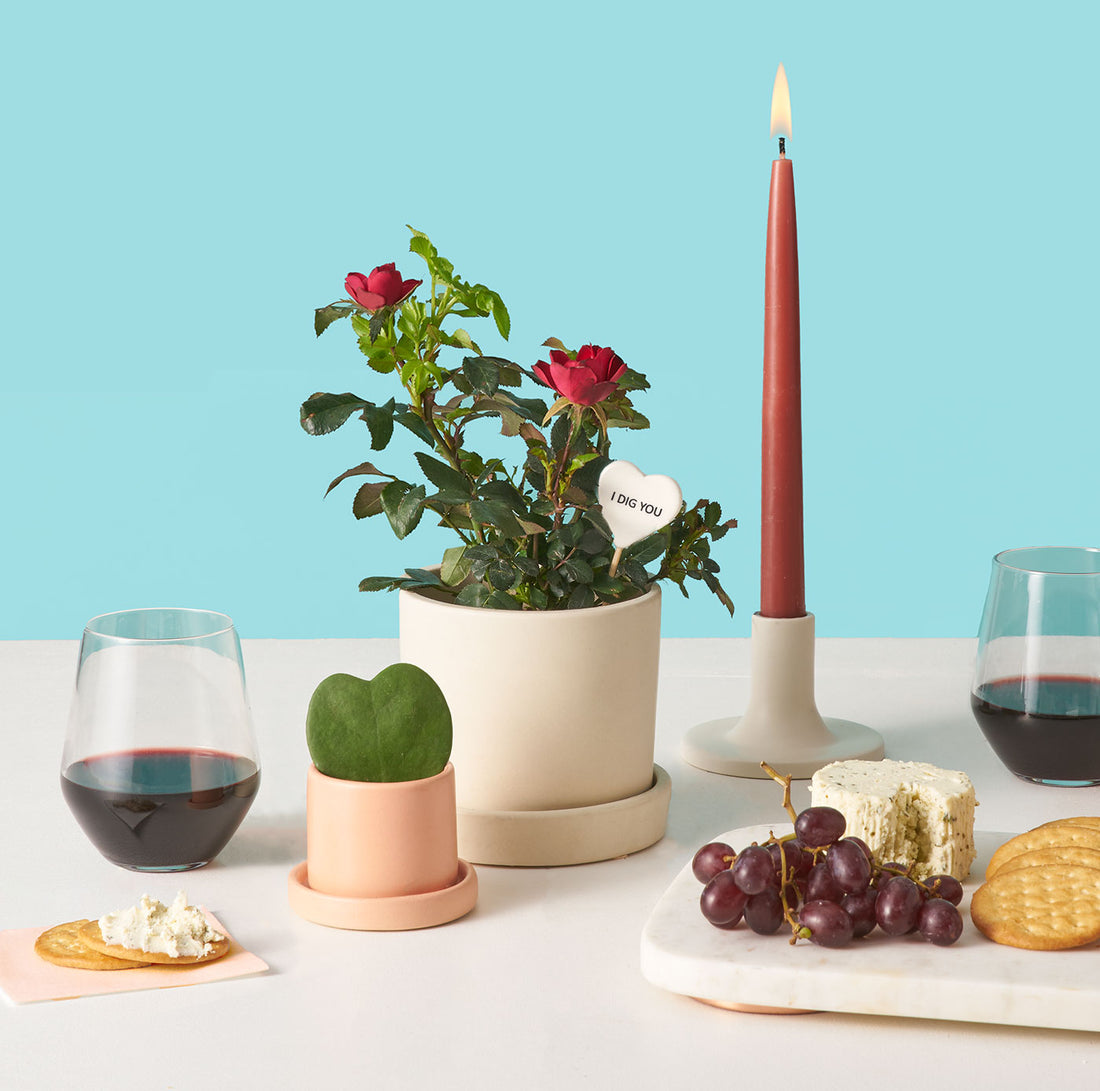
Plants 101
Petite Knock Out® Rose

Learn how to care for the Petite Knock Out® Rose!
The Petite Knock Out® Rose is an easy-to-grow shrub rose bush that can be added to your indoor plant collection now — then brought outside to your garden come spring, when temps are consistently above 60 degrees Fahrenheit. With ample light and water, your petite rose bush will bloom vibrant red flowers early spring through late summer. Learn more about caring for your Petite Knock Out® Rose below.
Sunlight
Thrives in bright direct sun for 6-8 hours per day, so choose a sunny spot in your home! Indoors, flowers will last for 2-3 weeks.
When flowers begin to fade or plants start to look sad, you can take your plant outside and keep in the container or plant into the ground, as long as temps are warm enough. If it’s too cold outside right now, we recommend waiting it out indoors for warmer temps and keeping your rose bush in a sunny spot where you can water it regularly.
Your rose bush will go semi-dormant from early fall through winter, which is typical of most blooming plants.
Water
Water every 2-3 days, allowing soil to dry out at least two inches down between waterings. Expect to water more often in brighter light and less often in lower light.
Humidity
Any humidity level will do.
Temperature
Average home temperature of 65°F-85°F. (If outside, it’s best not to let it go below 60°F.)
Planting Your Rose Outdoors
- Choose a sunny space outside. Your rose bush requires a minimum of 6-8 hours of sunlight each day.
- Dig a hole slightly larger than the container your rose bush is in. Use your shovel to loosen up the soil at the bottom of the hole you’ve dug.
- Remove your rose bush from its container and loosen its roots.
- Place the bush in the hole and make sure that the base of the plant is in line with the soil.
- Break up potting soil into looser pieces and add it around the plant.
- Water the rose bush around the base of the plant.
- Continue to check on the plant and water it as needed.
Shipping Considerations
- Rose bushes might arrive without open blooms depending on the season. If so, don’t sweat it! Give it plenty of light and water, and your rose bush will produce new buds in no time. With bright, direct light, your rose bush should bloom 1-3 weeks after delivery. The more optimal the conditions your plant receives, the more quickly it will begin blooming.
- If you see that there are blunt cuts or pruned branches on your bush, that means your plant has been pruned to encourage new growth and a bushier growth habit. You'll soon see new growth (light green foliage) develop.
- The Petite Knock Out® Rose can grow up to 18 inches tall, but overall is meant to stay petite!
Common Problems
SYMPTOM: Crispy leaves with dry soil
CAUSE: Too much direct light or not enough water
SYMPTOM: Yellowing leaves with wet soil
CAUSE: Overwatered
Precautions
This plant is considered pet-friendly, e.g. non-toxic for cats and dogs, but best practice is always to keep houseplants out of reach of small children and curious pets.
Thanks to our friends at Star® Roses and Plants for sharing their Knock Out® Rose with us! Learn more on their FAQ page.

Words By The Sill
Empowering all people to be plant people—a collection of articles from The Sill's team of plant experts across a variety of plant care topics to inspire confidence in the next generation of plant parents. Welcome to Plant Parenthood™.
Do Some Plant Shopping